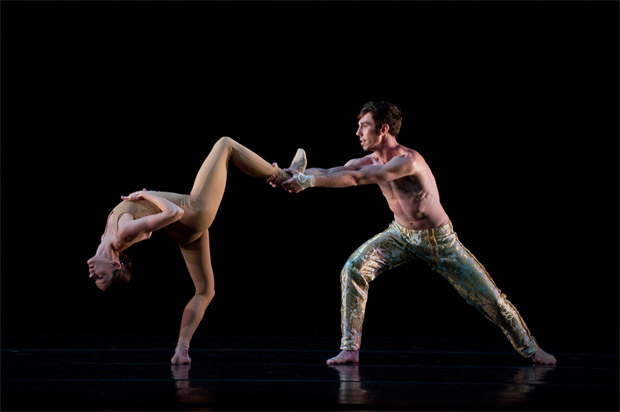
Springtime at Juilliard
Juilliard School
Juilliard Dances Repertory: Waldstein Sonata, Gnawa, Secus
New York, Juilliard School
28 March 2012
www.juilliard.edu
Every spring the Juilliard Dance department presents a show of repertory dances, i.e. pre-existing works taught to the students by faculty members or guests from other companies. The Juilliard dancers, many of whom will go on to join contemporary dance companies all over the country and in Europe, are consistently strong, well-trained, touchingly keen. One of the most moving performances of Martha Graham’s Appalachian Spring I ever saw took place at a spring concert at Juilliard. This year (March 28-April 1), the three works on show were José Limón’s Waldstein Sonata, Nacho Duato’s Gnawa, and Ohad Naharin’s Secus (a section from the longer work Three).
The program opened with Limón’s Waldstein Sonata, a straightforward, characteristically uplifting work set to one of Beethoven’s great piano sonatas. The pianist, Yuxi Qin, played with extraordinary precision – it was too bad that she was stuck at the back of the stage, where the sonata’s singing lines could not really ring out into the theatre. Limón’s dance is well-constructed, straightforward, and pleasing to the eye, an earnest and life-affirming reading of the music, but no match for the music’s depth, and subtle play of timbres. The eight dancers leaped across the stage, with one arm outstretched as if reaching for the future, or squared off in quadrilles, and eventually came together in the characteristic Limón circle, a recurring symbol of community and unity in his work. The movements were clean, noble and serene, the arms beautifully sculptural. Limón’s technique has a beautiful, natural-looking quality, which translates clearly into a visual metaphor for reverence – for the body, for movement, for music. His dances age well because the technique looks universal. But Waldstein Sonata, which was completed by Daniel Lewis (a longtime member of Limón’s company) after the death of his mentor in 1972, is too generic to be one of his great works.
Gnawa, on the other hand, is one of Duato’s best, though Duato does not have Limón’s depth. Duato is a master of atmosphere, a stylist with an eye for off-kilter, emotionally-tinged, virtuosic movement. His musical choices are sophisticated and theatrical. He sometimes tries too hard to be profound, in the vein of his mentor, Jiří Kylián, but the results tend to be rather overwrought, overly baroque. (His solo Kaburias, danced by David Hallberg at the most recent Kings of the Dance, was a perfect example of this tendency. It contained much skirt-swishing, head-thrashing, and back-arching, but revealed little about the dancer, the music, or anything else.) Gnawa, however, combines all of Duato’s strengths in a pleasing way. The music is a collage of gorgeous, contemporary, Sufi-influenced Moroccan songs with mesmerizing rhythms. There is sexy, acrobatic partnering for a principal couple, and choreography for the ensemble is striking, stylish, and playful in a way that perfectly matches the spirit of the music. And then there are the usual atmospherics: in one section, the dancers carry pretty lamps and dance to the light of their flickering flames, an exotic picture out of La Bayadère.

In Gnawa, the Juilliard dancers were able to let go in a way that the Limón choreography, with its solid architecture, did not permit. They became sensual night-creatures, stomping and flinging their arms, rolling and swaying, bobbing their heads to the infectious rhythms. They linked arms in lusty line dances, and a shirtless man erupted in a playful solo that swooped and slithered along the rippling surface of a flute melody. The men were shirtless; the women wore elegant black, ankle-length dresses. These decorative dances framed an erotic pas de deux full of imaginative, off-kilter lifts. Perhaps the couple was meant to evoke a the origins of the species, a primal coupling of Adam and Eve. Who knows. What matters is that on the night I attended (March 28) this duet was danced with sensuality and lyricism by Daphne Fernberger and Christopher Kaiser. They will do honor to whatever company decides to pick them up once they leave Juilliard.
The closer, Secus, was typical Naharin fare: aggressive, frontal, and clever in a heavy-handed sort of way. It’s obvious that in his choreography Naharin is responding to a basic discomfort – whether it is caused by something specific to Israel or a more universal circumstance, I’m not sure. His dancers, or in this case Juilliard’s dancers, become the bearers of his dystopian message: the world is f**ked up. They stare out blankly, petulantly, and whenever they do something slightly outrageous – say, shake their hips at us or wiggle their thumbs – they peer out as if to say, that’s right, and then stomp off. I can’t help but feel that they are tools in a cynical game. Naharin is sixty, and the system that so weighs on him, whatever it is, has served him well. His company is healthy and tours extensively; he’s a huge figure in the dance world. But he still composes dances as if he were an angry teenager. Which is why these actual teenagers, who are still filled with the rage and confusion of their age (mixed with a desire to be loved and taken seriously), perform his works with such emotional involvement. They throw their limbs about, squat down and tilt their bottoms at the audience – “I’m sexy and I know it!” – or box the air, grab at their own necks. “FU, world”. But their look has the blankness of fashion ads; it is an unintelligent stare with no sense of identity, or big ideas, or real empowerment. Toward the end of the piece they advance in three lines, like prisoners, showing us bits of naked flesh (eventually they pull down their underwear). I feel nothing, except the sense that the dancers’ talents and emotional intensity could be better used. Throw off your chains!
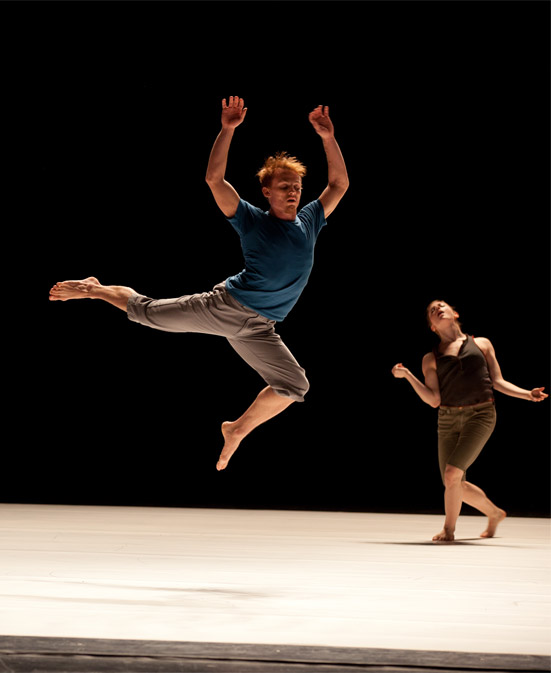
To make matters worse, the structure of Secus – and so many Naharin dances – is stultifying: little squiggles of movement, interesting by themselves, performed on a square beat, never developed into something larger, more complex. Short sections subdivided by blackouts. Uninteresting non-sequiturs. The music, mostly cool electronica, is treated basically as hipster ambient noise. Then, in the final section, with a final wink, we hear a song by the Beach Boys: You’re Welcome, a haunting accapella tune with interesting harmonies. To the chant-like phrase Well you’re welcome, well you’re welcome, well you’re welcome, well you’re welcome to come, the dancers stomp (1-2-3-4, 1-2-3-4) opening their arms in a hospitable embrace and then poking the air belligerently. They spill across the stage, repeating this phrase over and over in a wild zigzag of lines, before wandering off one by one. Yeah, we get it, we’re not welcome. Is this really all that Naharin has to say?








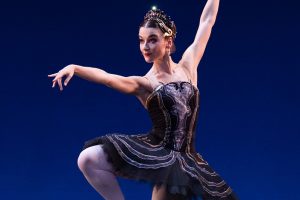

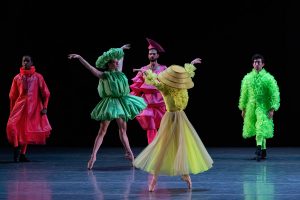


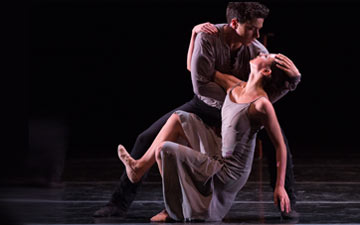

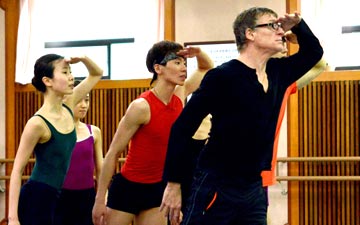

You must be logged in to post a comment.